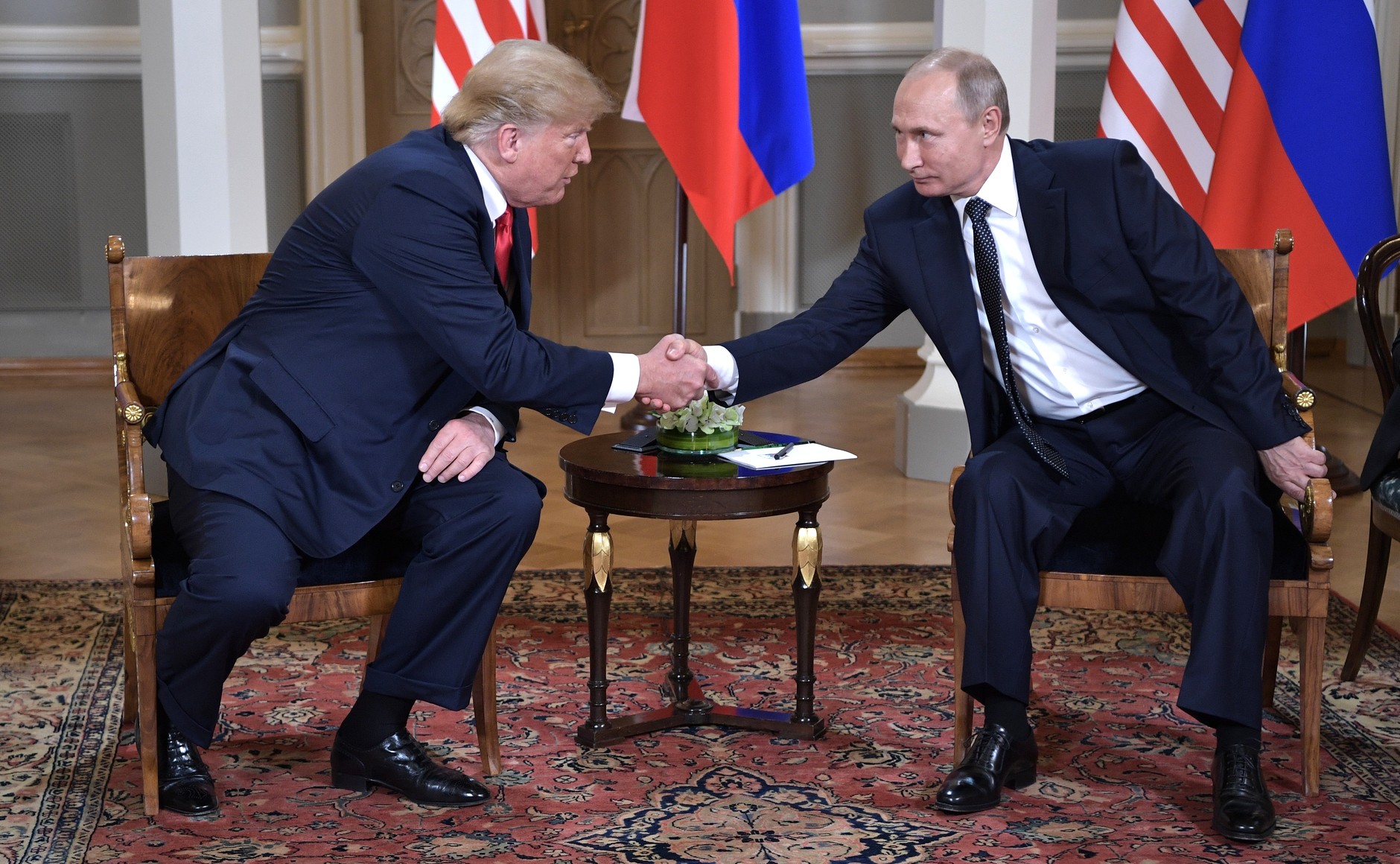And Washington can no longer drive them out

And Washington can no longer drive them out
In November, if all goes according to plan, Chinese President Xi Jinping will inaugurate a new deep-water port on the Pacific coast at Chancay, 70 km north of the Peruvian capital, Lima. This is one of China’s most ambitious projects in Latin America, and the Chinese company Cosco and its local partner have already invested $1.3 billion in its construction. The port will connect China and South America, reducing the travel time for ships by 10 days.
The project has caused great concern in the U.S.
For 200 years, North America relied on the Monroe Doctrine («America for Americans») and initially paid little attention to China’s penetration of its «backyard». But when the White House and the Pentagon finally «woke up», they were horrified to see how China had transformed itself into a global competitor, conquering vast areas of Latin America and becoming a major player in the region.
The results have been staggering: over the past 20 years, trade between China and Latin America has grown by 2,600%. Today, the volume of trade between the People’s Republic of China and South America and the Caribbean has reached $450 billion, up from $18 billion two decades ago. By 2035, trade is expected to exceed $700 billion.
For Latin American countries that have already recognized China, but not Taiwan, these relations have become a priority in terms of trade, socio-economic, and even cultural development. Currently, 22 countries in the region are part of China’s Belt and Road Initiative.
For example, in Brazil, the continent’s largest and most populous country, trade with China is more than double that with the United States. Moreover, the value of Brazil’s exports to China exceeds the combined value of its exports to the United States and the European Union.
Since 2002, the United States’ share of the region’s trade has fallen from 57% to 43%, and its share of imports from 46% to 32%. China, on the other hand, has experienced the opposite trend, with exports to China rising from 2% to 12% and imports from 4% to 18%.
Colombian economist and political scientist Segundo Sanabria Gomez explains why Latin Americans won’t shed tears if China manages to displace the United States: «When China comes, it doesn’t bring the outdated, two-century-old production methods; it brings cutting-edge technology. The U.S. has helped Latin America become a consumer, but it hasn’t helped it become a producer. They produce smartphones, for example, and we give up our meager incomes to buy them».
Experts on U.S.-China relations see 2020 as a «new watershed». According to Boston University and the American NGO Inter-American Dialogue, for the first time in 15 years, China did not provide loans to any Latin American country that year.
China is now South America’s most important trading partner, and the economic relationship has gone far beyond the simple trade of raw materials and the provision of loans. They include traditional infrastructure projects (roads, bridges, ports) and «new infrastructure» such as electric vehicles, telecommunications, and renewable energy.
Initially, Trump arrogantly and dismissively treated China’s growing presence in his «backyard» as nothing more than a mosquito bite, but in the second half of his term, the Trump administration responded more aggressively. Both Trump and Secretary of State Mike Pompeo repeatedly expressed their disdain for China’s activities in Latin America, calling it «predatory economic activity» and «malign behavior» in the region.
Under the Biden administration, the rhetoric against China’s presence in Latin America has continued. President Biden has made it clear from the outset that China is his primary concern on the international stage. He has consistently expressed a strong desire to counter Beijing’s «geopolitical ambitions» and called China’s activities in the Western Hemisphere «unwelcome». However, no concrete projects of the Biden administration in Latin America have materialized.
Meanwhile, in just 15 years, China has become the region’s largest official creditor, investor and most active trading partner. In the next 15 years, China is expected to surpass the United States.
Undoubtedly, despite China’s exponentially growing economic influence in the region over the past 20 years, the United States remains and will continue to be Latin America’s most important partner due to shared history, culture, and economic interdependence. While China’s role as a trading partner is growing, the overall economic relationship between the United States and Latin America far exceeds that with any other country in terms of private investment and remittances.
Nevertheless, the bipartisan chorus of American lawmakers sounded the alarm and began reporting China’s activities to the Pentagon.
The Chairwoman of the Western Hemisphere Subcommittee of the U.S. House Foreign Affairs Committee, María Elvira Salazar, stated during hearings in September 2023: «The hammer and sickle have returned in full force, and the first task of the Chinese Communist Party is to take over Latin America, our ‘backyard.’ Today they control key ports in Peru, railroads in Argentina, airports in Honduras, dams in Ecuador, factories in Brazil, and critical minerals in Bolivia, posing a serious security threat to us in the United States. Needless to say, they are the bad guys with very bad intentions. And their only goal is to seize power».
Notably, none of the Chinese projects are military in nature, and in the absence of concrete evidence, both lawmakers and military officials resort to blatant speculation bordering on accusation.
For example, China plans to build a high-speed railroad across Colombia and massive ports on the Pacific and Atlantic coasts. This would serve as an alternative to the famous Panama Canal and is expected to revolutionize world trade in the same way that the Canal once did. Another example is the aforementioned port of Chancay on Peru’s Pacific coast. These are purely commercial and economic projects designed to accelerate the development of both countries and the region as a whole.
But attention! The commander of the U.S. Southern Command (SOUTHCOM), General Laura Richardson, has claimed that the Chinese have initiated 29 port projects in 17 countries, labeling them baselessly as «dual-use» facilities, i.e. for both civilian and military purposes.
Why is there sudden concern? It was explained by Major General Evan Pettus, commander of the 12th Air Force (Southern Air Forces): «China’s activities in the Western Hemisphere collectively pose a serious threat to the interests of the United States and its allies. By undermining democratic governance in the region, China is threatening the U.S. pivot to the Indo-Pacific and jeopardizing freedom of movement, access, and influence in our near abroad».
It is precisely the military-strategic position (for the U.S.) regarding the Indo-Pacific region-where the Americans are building anti-China alliances, modernizing old naval and air bases, and constructing new ones to set the stage for a possible future armed conflict with China-that explains the sharply negative U.S. attitude toward Chinese port projects. What if China secretly takes over these facilities and launches an attack on the U.S.?
Spy mania and paranoia have long reached extreme levels in the White House and the Pentagon. Chinese companies like Huawei, ZTE, Dahua, and Hikvision have implemented «Safe City» technology in various Latin American cities, incorporating advanced surveillance systems and enhancing local law enforcement capabilities. However, these systems raise concerns about potential misuse for espionage and surveillance purposes.
China has also built a growing network of space facilities in Latin America, mostly for civilian purposes.
In fact, the overall U.S. military buildup in the region is much broader and includes cooperation agreements on ports, aviation, and inland waterways. There is no Chinese counterpart to these agreements. However, China’s involvement in the region’s economic activities has not stopped Washington from sounding the alarm about China’s alleged military superiority.
In March of this year, SOUTHCOM Commander Laura Richardson, testifying before the U.S. House and Senate Armed Services Committees, predicted: «This is a pivotal decade, and our actions or inactions with respect to China will have consequences for decades to come. China continues its relentless march to expand economic, diplomatic, and military influence in Latin America, challenging the U.S. in all of these areas».
It’s obvious why the four-star general is scaring lawmakers: she’s justifying their military spending. In fact, SOUTHCOM has requested a nearly 50 percent increase in its 2025 budget, to $322.6 million.
In short, U.S. military superiority in Latin America is undisputed. In practice, Washington continues to confirm and strengthen its presence in the region in matters of defense and security.
In this context, Beijing has been extremely cautious about expanding its military presence in Latin America. Instead, it has successfully focused on trade, investment, and financial cooperation.
As the American magazine Time aptly noted, today’s Latin America looks more like China’s front yard than America’s back yard.





